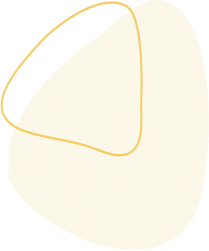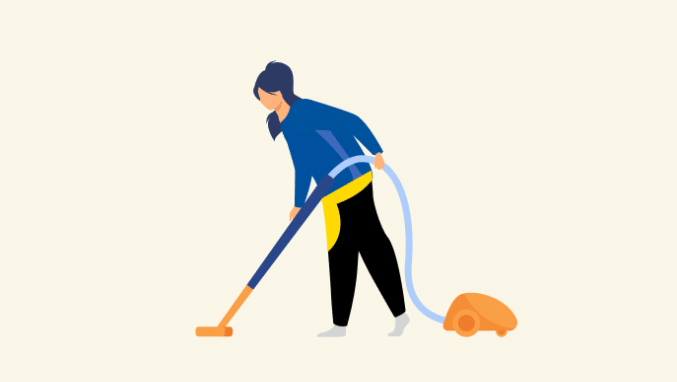Request An Estimate
You spend about a third of your time laying on your mattress. Do you remember the last time you gave your bed a deep, thorough cleaning? Chances are good you routinely clean other furnishings more often, even though you probably use them far less.
Why do so few of us even think about the cleanliness of our mattress or cleaning our mattress with a vacuum cleaner? Probably because those newly laundered sheets and other bedding give us the impression that our bed is fresh and clean. There’s a lot going underneath that bedding we may not be aware of.
Your mattress is a haven for some pretty unpleasant stuff. From the dust that settles on it from the air to the build-up of skin cells you shed, your mattress may very well be the dirtiest place in your home! That means you’re laying in, and breathing in, some nasty particles night after night, year after year. In fact, your mattress may be a significant cause of allergies and other health problems and may aggravate conditions such as asthma.
Who and What Is Living in Your Mattress?
Here is a list of some things, both biological and synthetic, that are lurking just beneath your sheets:
- Allergens: Dust mites, pet dander, dead skin and particles. By-products of roaches and other insects can aggravate asthma and allergy sufferers.
- Fungal spores: Penicillium, Cladosporium, Alternaria and other types of fungi and mold have been shown to create health problems like bronchitis and respiratory infections.
- Bacteria: Skin, oral and intestinal/fecal matter and other bodily fluids create harmful bacteria.
- Chemicals: Many mattresses contain potentially harmful plasticisers, flame retardants, isocyanates and even formaldehyde that has been linked to asthma, allergies, and lung, nose, and throat cancers.
- Food: Decaying food from snacking in bed attracts ants and other insects and can promote the growth of bacteria.
- Cosmetics: There are plenty of hazardous chemicals in your makeup and lotions that can be absorbed into your mattress.
- 26 gallons of sweat! Mold, mildew and fungi love damp places, and all that perspiration that your mattress absorbs promotes bacterial growth.
No wonder many of us don’t sleep so well! With all that’s going on right beneath us as we sleep every night, it shouldn’t be too surprising that we wake up with a stuffy nose, dry throat and even a morning cough. And those are just the symptoms we notice. Bacteria, fungi and chemicals can cause health issues that may not have any obvious symptoms. Even if you wake up feeling rested and refreshed, your lungs and skin could still be affected by that innocent looking mattress.
How Often To Vacuum A Mattress?
Good Housekeeping recommends you vacuum your mattress every three-to-six months, while other sources recommend mattress vacuuming on a monthly basis. If someone has allergies in your home, you may need to vacuum more frequently to remove dust and other allergens. At the very least, make mattress vacuuming a part of your seasonal cleaning. When you clean up any spills or spots after vacuuming, make sure you give your mattress time to dry before putting on any bedding.
Besides vacuuming your mattress, disinfect your bed as part of your routine mattress cleaning. Choose a safe, antibacterial spray and avoid using bleach. Bleach is too harsh for the fabric on most mattresses. The goal is to clean the surface of the mattress without letting it get wet since moisture can lead to mold or mildew. For disinfectant sprays, spritz lightly across the surface of the mattress, then wipe with a clean cloth that’s been dipped in warm water and thoroughly wrung out. Be sure to give your mattress plenty of time to dry.
Mattress Vacuuming Best Practices
Controlling and eliminating dust mites, preventing the build-up of fungi and bacteria and clearing out all those other pollutants requires a regular mattress vacuuming schedule. While you can handle this cleaning chore yourself, you may want to use a professional cleaning service experienced in cleaning for health. If you go the DIY route, use a vacuum with HEPA filtration to capture more allergens and prevent any by-products from getting into the air.
- Be sure that the hoses and entire vacuuming route through your vacuum are clear of obstructions and securely connected for maximum suction. You want to remove as much of the dust and other pollutants as possible.
- Vacuum the entire mattress surface with the upholstery attachment on your vacuum cleaner. Switch to your vacuum’s crevice attachment for seams and crevices where dust, dead skin and other icky stuff collect.
- While you’re at it, vacuum thoroughly around the bed frame, baseboard, carpeting around the bed, and upholstered furniture nearby.
- Vacuum under your bed thoroughly as well. Some of us don’t do this twice in a lifetime, much less the recommended twice a month!
- For bagless vacuum cleaners, discard the contents into a plastic bag and seal it. Thoroughly wash the removable container and any filters with very hot, soapy water to get rid of any remaining bacteria and other contaminants.
- Once you’re finished vacuuming, spot treat any stains with an appropriate cleaner. A furniture upholstery cleaner or enzyme-based odor remover works well on many bodily fluids.
For a quick and easy mattress cleaning between deep cleans, sprinkle baking soda on the mattress every time you change the sheets. Baking soda is the perfect way to keep your mattress fresh between cleanings. It’s all-natural, kills mold and mildew, absorbs moisture and odors, and it’s perfectly safe. When you clean your mattress with baking soda, you want to use a fine-mesh strainer and sift about a cup over the surface. Let it sit for a couple of hours to absorb odors, then vacuum it up.
Don’t Forget to Flip Your Mattress
It’s a good practice to flip a mattress every six months to help it keep its shape. But many beds now feature pillow tops or other elements that make flipping impractical. Check out the manufacturer’s instructions, but if your mattress is a pillow top or has a designated head and foot, you’ll have to settle for rotating it. Some manufacturers recommend rotating the mattress so the foot and head change positions every six months.
How to Clean a Mattress Without a Vacuum
The best way to keep your mattress clean and reduce how often you vacuum is to use a cover. Pick out a washable cover that is easy to remove, wash, and replace. Some covers even help reduce allergies and respiratory issues. With or without a cover, your mattress will still need to be cleaned periodically. Here’s how.
Wash the sheets, pillowcases, comforters, and throws weekly. Clean bedding will protect the mattress cover, which in turn protects the mattress. When you get a stain, you should remove and wash all bedding, including the mattress cover. Most stains can be removed with a homemade cleaning solution.
Mix mild dish soap with water until suds form. Apply the suds only to the soiled area using a wrung-out cloth. Avoid getting the interior padding of the mattress too damp. Depending on the stain, you may have to scrub gently to break it down. For tougher stains like urine, sweat, vomit and blood, you’ll need some extra cleaning power.
Mix one cup of three percent hydrogen peroxide with three tablespoons of baking soda and a few drops of dishwashing liquid in a spray bottle. Mist the stain and gently brush with a soft scrub brush or old toothbrush until the stain is gone. Finish by misting the cleaned area with fresh water and blot with an absorbent towel.
You must let the mattress dry before making the bed. If it’s a warm, sunny day, you can dry a mattress quickly outside. You can also use a fan blowing across the mattress to decrease drying time.
Mattress vacuuming can help control all those allergens, dead skin, dust mites and other yucky stuff in your bed. Just remember it’s essential to use a vacuum cleaner fitted with a HEPA filtration system like our commercial-grade vacuums and follow the tips above. When you add this healthy cleaning task to your regular cleaning list, you can sleep easier knowing your bed is truly fresh and clean.
Request An Estimate










